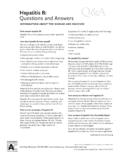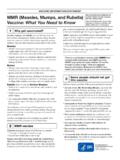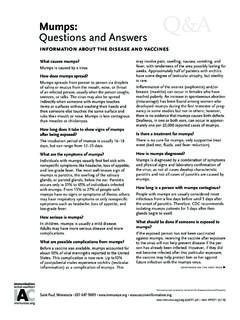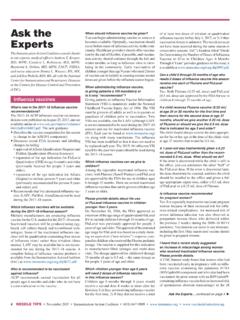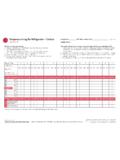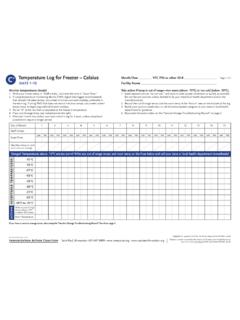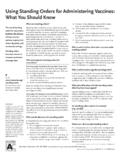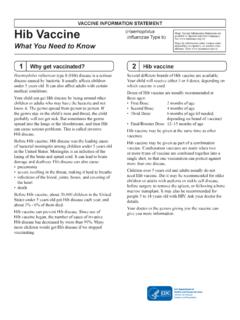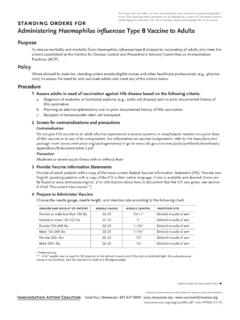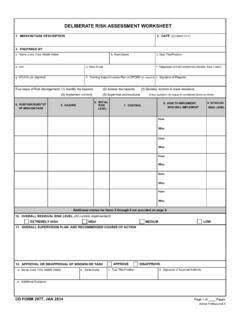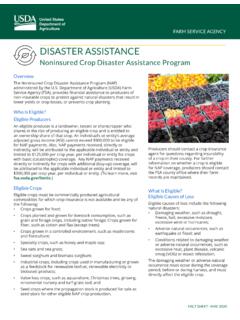Transcription of Questions and Answers
1 Technical content reviewed by the Centers for Disease Control and PreventionSaint Paul, Minnesota 651-6 47-9009 Item #P4 211 (6/18)What causes mumps ? mumps is caused by a does mumps spread? mumps spreads from person to person via droplets of saliva or mucus from the mouth, nose, or throat of an infected person, usually when the person coughs, sneezes, or talks. The virus may also be spread indirectly when someone with mumps touches items or surfaces without washing their hands and then someone else touches the same surface and rubs their mouth or nose.
2 mumps is less contagious than measles or long does it take to show signs of mumps after being exposed?The incubation period of mumps is usually 16 18 days, but can range from 12 25 days. What are the symptoms of mumps ?Individuals with mumps usually first feel sick with nonspecific symptoms like headache, loss of appetite, and low-grade fever. The most well-known sign of mumps is parotitis, the swelling of the salivary glands, or parotid glands, below the ear. Parotitis occurs only in 31% to 65% of individuals infected with mumps .
3 From 15% to 27% of people with mumps have no signs or symptoms of illness; others may have respiratory symptoms or only nonspecific symptoms such as headache, loss of appetite, and low-grade serious is mumps ?In children, mumps is usually a mild disease. Adults may have more serious disease and more are possible complications from mumps ?Before a vaccine was available, mumps accounted for about 10% of viral meningitis reported in the United States. This complication is now rare. Up to10% of postpubertal males experience orchitis (testicular inflammation) as a complication of mumps .
4 This may involve pain, swelling, nausea, vomiting, and fever, with tenderness of the area possibly lasting for weeks. Approximately half of patients with orchitis have some degree of testicular atrophy, but sterility is of the ovaries (oophoritis) and/or breasts (mastitis) can occur in females who have reached puberty. An increase in spontaneous abortion (miscarriage) has been found among women who developed mumps during the first trimester of preg-nancy in some studies but not in others; however, there is no evidence that mumps causes birth defects.
5 Deafness, in one or both ears, can occur in approxi-mately one per 20,000 reported cases of there a treatment for mumps ?There is no cure for mumps , only supportive treat-ment (bed rest, fluids, and fever reduction).How is mumps diagnosed? mumps is diagnosed by a combination of symptoms and physical signs and laboratory confirmation of the virus, as not all cases develop characteristic parotitis and not all cases of parotitis are caused by long is a person with mumps contagious?People with mumps are usually considered most infectious from a few days before until 5 days after the onset of parotitis.
6 Therefore, CDC recommends isolating mumps patients for 5 days after their glands begin to should be done if someone is exposed to mumps ?If the exposed person has not been vaccinated against mumps , receiving the vaccine after exposure to the virus will not help prevent disease if the per-son has already been infected. However, if they did not become infected after this particular exposure, the vaccine may help protect him or her against future infection with the mumps : Questions and Answersinformation about the disease and vaccinescontinued on the next page How common is mumps in the United States?
7 Due to good immunization coverage, mumps is now rare in the United States. An estimated 212,000 cases occurred in 1964, while only 229 cases were reported in 2012. Several large outbreaks of mumps have occurred in the since 2006, mostly on college campuses. Many people who got mumps in these outbreaks had already received 2 doses of mumps vaccine. As many as 6,500 cases were reported during years in which there were someone get mumps more than once?People who have had mumps are usually protected for life against another mumps infection.
8 However, second occurrences of mumps do rarely did vaccines for measles, mumps , and rubella become available?The first measles vaccines (an inactivated and a live virus product) became available in 1963, both of which were largely replaced by a further attenuated live virus vaccine that was licensed in 1968. The mumps vaccine first became available in 1967, fol-lowed by the rubella vaccine in 1969. These three vaccines were combined in 1971 to form the measles- mumps -rubella (MMR) vaccine. A vaccine that com-bines both MMR and varicella (chickenpox) vac-cines, known as MMRV, became available in antigen measles, mumps , and rubella vaccines are no longer available in the United kind of vaccine is it?
9 MMR vaccine contains live, attenuated (or weakened) strains of the measles, mumps , and rubella is this vaccine given?This vaccine is a shot given subcutaneously (in the fatty layer of tissue of the upper arm).Who should get this vaccine?All children, adolescents, and adults born in 1957 or later without a valid contraindication should have documentation of vaccination or other evidence of immunity. Additionally, some healthcare personnel who were born before 1957 may also need proof of vaccination or other evidence of kind of evidence of immunity can substi-tute for MMR vaccination?
10 Evidence of immunity can be shown by having labo-ratory evidence of immunity to measles, mumps , and/or rubella or laboratory confirmation of disease. However, if a person doesn t have evidence of immunity to all three diseases ( , measles, mumps , and rubella), they would still need to get vaccinated with MMR since the vaccine is not available as a single antigen product in the what age should MMR be given?The first dose of MMR should be given at 12 15 months. The second dose is usually given at age 4 6 years but can be given earlier as long as it has been at least 28 days since the first first dose of MMR should be given on or after the child s first birthday; the recommended age range is from 12 15 months.
